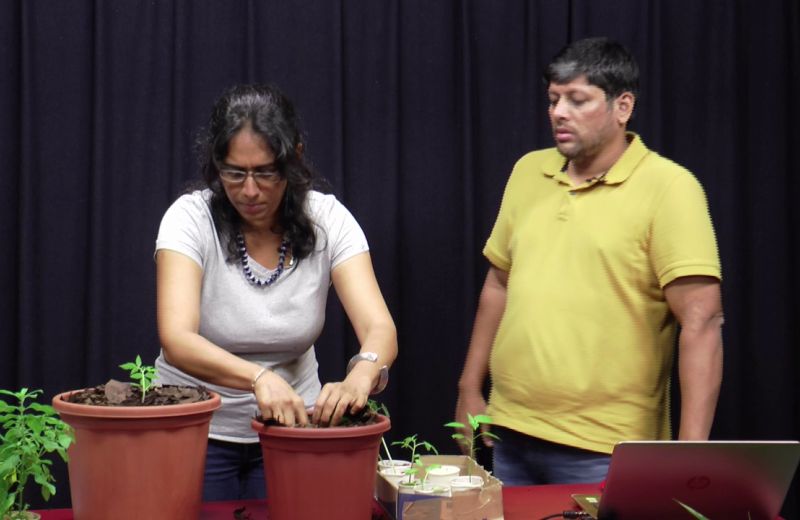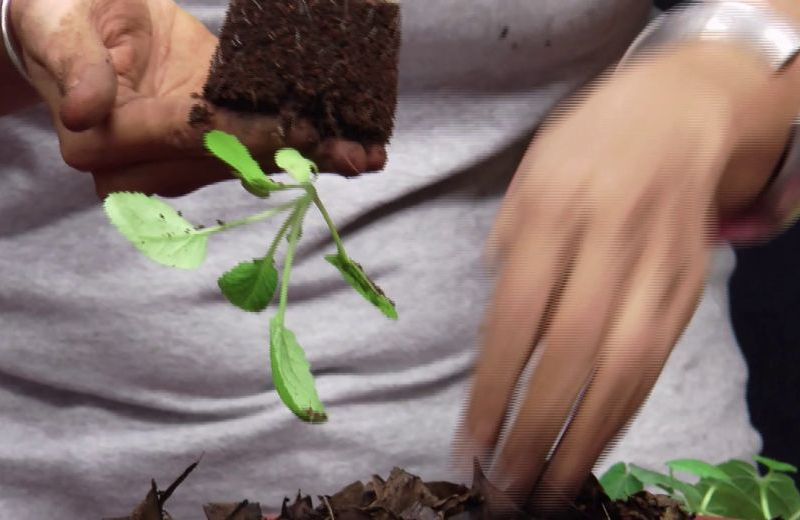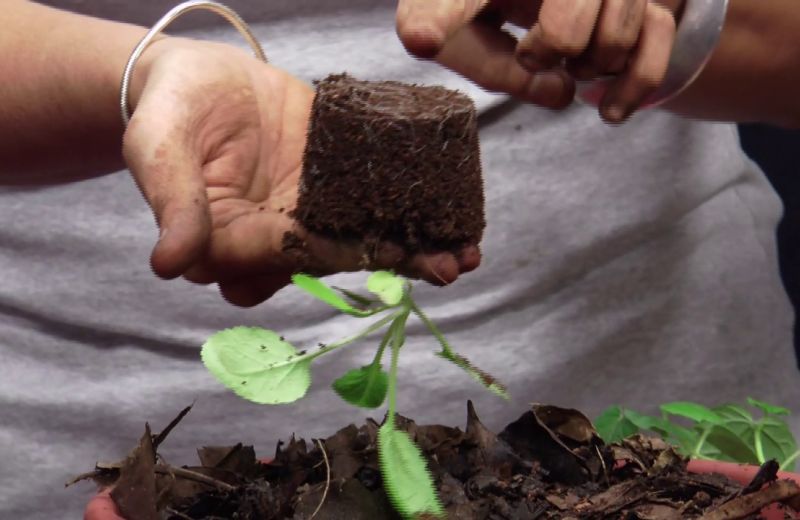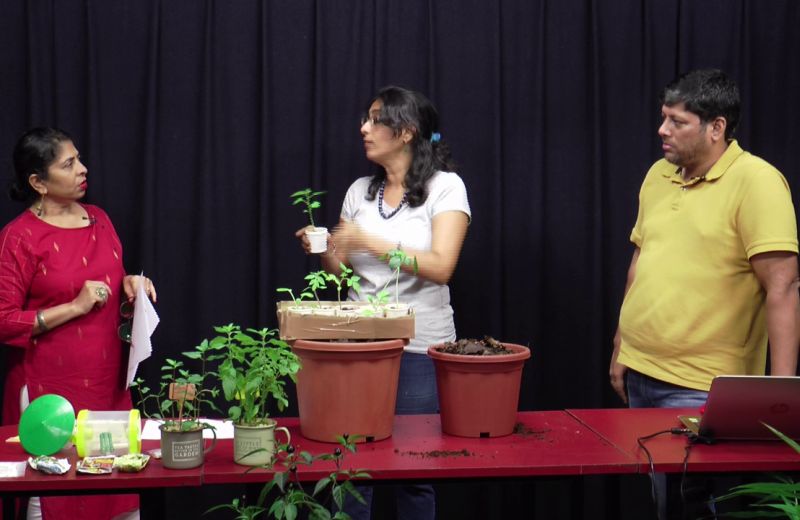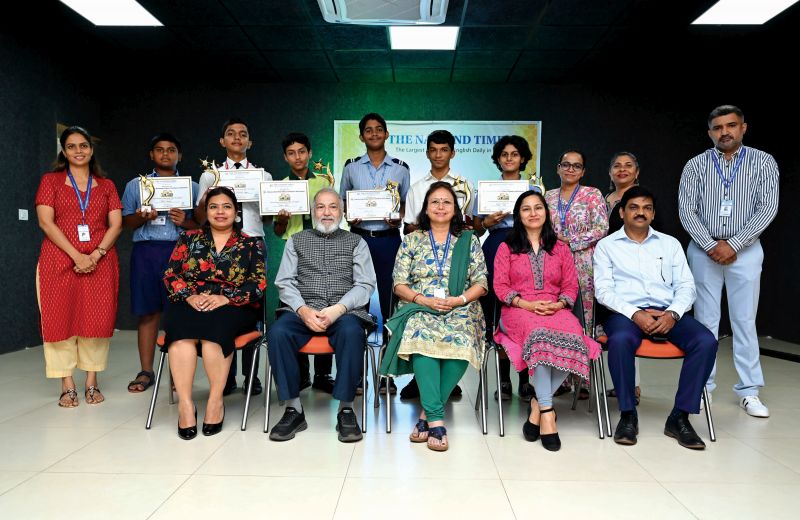‘Home grown and organic’, a workshop on growing organic vegetables at home was organized by The Navhind Times on Sunday, September 27 and aired live on the Goa365 channel. Conducted by Yogita Mehra and Karan Manral, the hour-long session was informative and interactive.
Co-owners of Green Essentials, a store, nursery and knowledge centre all packed in one; Yogita and Karan’s journey into the field happened as they say, ‘quite organically’. “The need for fresh mint was what actually made me take the first step and soon the three pots of mint I planted led to experimenting with other veggies and before I knew it, I had my own little vegetable patch,” recounts Yogita who holds a Masters in Environmental Economics from the University of Massachusetts and has worked at The Energy and Resources Institute (TERI) in Goa for eight years. Yogita is ably backed in her venture by her husband, Karan who has been involved in urban tree planting initiatives in Goa, and the pair is helping many begin their own organic home gardens. With twelve years of experience since opening their store, they also hold workshops across Goa and have extended to Mumbai and Bengaluru as well.
Before planning a garden what one should consider is space, said Yogita. “Sunlight is another important factor as most vegetables we eat require 4 to 6 hours of direct sunlight.” After figuring out the space that will be used, whether it is pots or the ground, the next step she said is to make a list of what one wants to grow. “When this is in place, the attention has to be on soil which for an organic gardener is vital as everything begins and ends with soil.” To this Karan added, “You are not taking care of the plants; you are taking care of the soil which in turn will take care of your plants.”
Demonstrating a quick and simple way to make good soil, she mixed 2 pots of regular soil with a pot of vermicompost and a pot of coco peat. “The vermicompost contains a lot of the nutrients that plants require besides the microbes that are equally essential,” she informed. Coco peat she explained does not have much nutritional value for the plant but is a soil conditioner. She elaborated on how the coco peat once it is mixed with the soil and vermicompost allows the excess water to drain and at the same time holds water which results in watering the plant less.
In answer to a question regarding the use of coconut husk as a substitute for coco peat, Karan replied, “After the husk decomposes for a while it will become like coco peat but care should be taken that the husk has not been stored any where there is saline water.” Construction sand too he said was a good substitute and warned against using sand from the beach due to the salinity. Another viewer also inquired about the use of mustard cakes as fertilizers which Yogita said was absolutely fine.
Asked what vegetables were best suited for a home garden that did not get direct or much sunlight, Karan recommended, pepper, ginger and turmeric. “Micro greens too are very shade tolerant in addition to being extremely nutritious and can be grown in trays as well.”
The next topic on the agenda was choosing the right container for the plant and Yogita recommended a 10-inch deep pot for leafy vegetables like arugula, spinach, lettuce, etc. For larger and fruit-bearing plants like chillies, tomatoes, brinjals, etc, she said, a 12 or 14 inch is ideal and added, “What is most important is that the pot has holes so that water drains off and also before filling the pot with soil, ensure that it is lined at the bottom with broken pieces of terracotta pots or pebbles.” This she explained was to prevent the holes in the pot from getting blocked.
Expounding on the benefits of mulch (dried or wet leaves), which is not used by most home gardeners, she demonstrated how it is to be used. “The best soil is in the forest because of the leaves that fall from the trees and cover up the soil which in turn protect the plants and trees from sun/rain and keep the microbe population thriving while also stifling weed growth. Hence mulch is very beneficial for plants,” added Karan.
Choosing the right seeds is the next step to successful gardening and Karan spoke about the importance of using mature and open pollinated seeds. Demonstrating how seeds are to be planted in individual containers and then transplanted into the soil or bigger containers, Yogita said. “While transplanting it is imperative not to break the roots as they are very tender and damaging the roots will only take more time for the sapling to rejuvenate.”
Another tip she gave to those who face the problem of flowers falling or dying before fruition, she said, “When this happens it is a sign of nutrient deficiency in the soil especially potassium deficiency. The best organic remedy would be to use wood ash (gobarr) or bone meal (powder obtained by grinding meat bones).” A small handful sprinkled on the soil in the pot, she said was sufficient.
Many other queries and doubts were answered and cleared. The workshop provided many tips that will definitely come handy to home gardeners.

